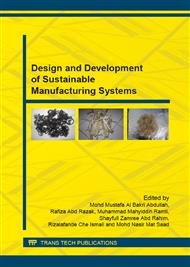p.403
p.408
p.413
p.417
p.421
p.429
p.434
p.439
p.444
Dynamic System Models Sutami Hydropower Plant Indonesia to Calculate the Economic and Environmental Aspects of Hydropower Plant Operation
Abstract:
The development of the power sector is required to consider not only the environmental factors but also the economic and security factors. Management of electrical energy in Indonesia faced a major problem because of the shortage of energy production demand continues to increase 7.1% annually and the energy production is also very depending on fossil energy sources which dominate 85% of the total power generation. This condition will lead to increasing gas emissions in greenhouse by 78.01 million tons per year. Evaluation of existing plants with a dynamic model of the system will be a consideration for the sustainability of hydropower operation. The simulation results of the Sutami HEPP show more economical and more eco-friendly than fossil energy-based power plant. It is important to build and maintain a HEPP in Indonesia today, due to the potential based on these considerations, the capacity and the reduction of greenhouse gas emissions.
Info:
Periodical:
Pages:
439-443
Citation:
Online since:
November 2015
Authors:
Keywords:
Price:
Сopyright:
© 2015 Trans Tech Publications Ltd. All Rights Reserved
Share:
Citation:


